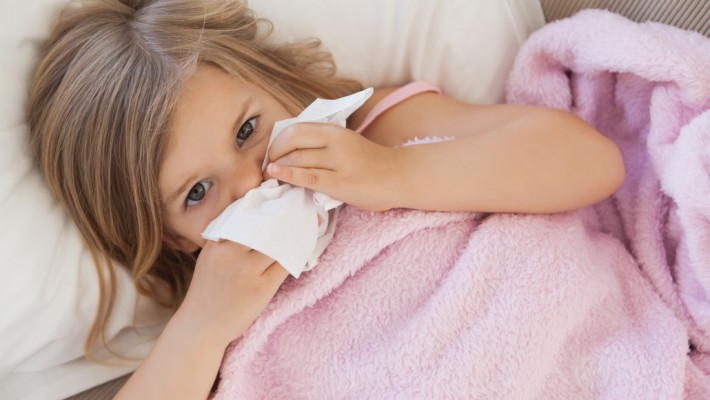Cold is the most common reason for a pediatric office visit. It??s responsible for a child??s absence from school & parent??s staying away from work.
Let us try to understand this common illness in the next few paragraphs.
What causes a Cold?
??Cold? is a group of symptoms caused by a number of viruses.Over a hundred viruses may be responsible. Therefore a child may be affected multiple times each year.
Children under 6 years of age may average 6-8 colds per year. Children in daycare appear to suffer from cold more commonly. The frequency of such episodes may decrease by the time they reach primary school.Episodes of cold may be more in children as they are still developing their immunity.
Colds may occur at any time of the year. Transmission occurs from one person to another directly or due to viruses in the environment. Colds tend to be more contagious during the first two to four days.
Contact ?? Cold virus may survive on the skin for upto 2 hrs & on surfaces (such as door handles, toys ) for upto a day. Infection can spread by touching such objects& then touching the nose, eyes, mouth of the uninfected.
Inhalation– Droplets containing virus or viral particles are released by coughing & during exhalation. However it is not usually transmitted by this route.
What are the symptoms?
Signs & symptoms usually show up a day or two after exposure. Nasal congestion & discharge are the most common symptoms. Discharge can be clear, yellow or green. Fever may be present during the initial phase. Other symptoms include: Sore throat, cough, difficulty in sleeping and decreased appetite. The glands in the neck may be enlarged. Symptoms may continue for up to 2 weeks and are usually worst during first 10 days. A second cold may sometimes superimpose and extend the period of sickness.
What are the complications?
Ear infections, wheezing, sinusitis & pneumonia are the common complications.
Ear infections: If a child develops fever after the initial phase of illness or fever continues for a prolonged period (beyond 3 days) ear infection can be suspected.
Wheezing: Children may develop wheezing even if they have not wheezed before. Colds may worsen asthma.
Sinusitis: If nasal congestion does not improve does not improve over 10 days then sinusitis may be suspected.
Pneumonia: Late onset of fever or prolonged fever may suggest pneumonia, especially if the child has signs of breathing difficulty.
How do you manage?
Treatment of cold is usually symptomatic:
- Anti-histamines, decongestants and cough expectorants have been used with adults.
- Improve symptoms of nasal congestion. Saline nose drops may be used to thin mucus.
- Suction can be used to remove secretions. Adequate amounts of fluids must be taken. Honey can be used in children older than one year. Antibiotics are not effective in treating colds but may be used if complications are suspected.
- Vitamin C used preventive may decrease the duration of cold.
How to prevent:
Hand hygiene:
- Maintaining hand hygiene either by washing with soap and water or by using alcohol based hand rub.
- Avoid contact of child with people who are ill.
- Clean surfaces with household cleaner eg. Lysol
Danger Signs:
Seek immediate help in the presence of the following symptoms.
- Prolonged refusal of feeds
- Excessive irritability or lethargy
- Difficulty in breathing or rapid breathing
- Fever lasting more than 3 days
- Prolonged nasal congestion (more than 10-15 days)
- Ear pain & other signs of infection


 Toll Free Number
Toll Free Number














